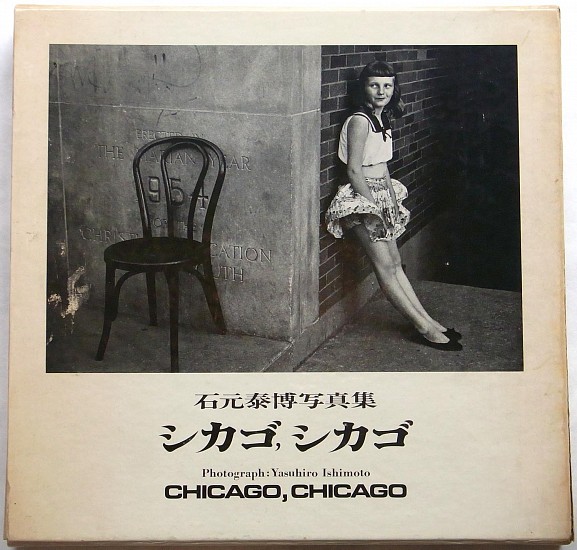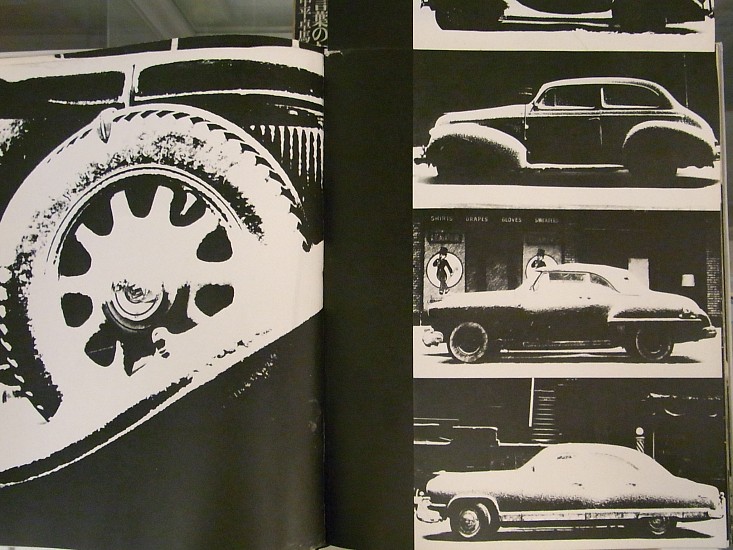Yasuhiro Ishimoto
Yasuhiro Ishimoto
Chicago Chicago, 1969
2075
First edition of Ishimoto's survey of 1960s urban life in Chicago, with over 200 black-and-white photographic images. "At a time when most of the leading Japanese photographers were actively caught up in their country's volatile political situation, Ishimoto seems deliberately to have maintained his distance, declaring his independence with a body of work that was different in both style and approach?Chicago, Chicago confirms this singularity and the promise shown in his earlier Aruhi Arutokoro. The later book demonstrates a photographer influenced by both Japanese and American sources and adopting neither wholeheartedly? It is arguably more completely realized, thematically tighter than Aruhi Arutokoro? Its old-fashioned, humanist virtues are considerable. Like the earlier work, the book is split into sections, seven of them this time, revealing various aspects of Chicago and two major photographic preoccupations of Ishimoto at the time-the formal urban landscape and the street portrait" (Parr & Badger, 289). Contains a foreword by Harry Callahan, an introduction by Shuzo Takiguchi, and notes by Yusako Kamekura, all in English and Japanese. Without scarce bellyband, rarely found. Book about-fine, slipcase with some foxing and light restoration. A beautiful copy of a scarce book, in original slipcase
Price Upon Request
Yasuhiro Ishimoto
Someday Somewhere, 1958
2089
Yasuhiro Ishimoto (Japanese American, 1921- ) was born in San Francisco and raised Kochi City, Japan. In 1939, due to concerns of him being drafted he returned to the US where he studied agriculture at the University of California (1940-42). He moved to Chicago in 1944 and began to study architecture at Northwestern University in 1946 when he met photographer Harry Shigeta and took up photography seriously. Two years later Ishimoto transferred to the Institute of Design where he studied with Harry Callahan, Aaron Siskind, and Gordon Coster(1948-52). In 1961 he returned to Japan (Tokyo), where he has lived ever since. Ishimoto showed his devotion to his adopted city, Chicago, in his book, Chicago, Chicago (Bijutsu Shuppan-sha, 1969). This book is often regarded as Ishimoto's most personal statement - his bold use of contrast, the design of the frame, and the influence of his studies in architecture define his Chicago. Ishimoto has published many books and exhibited widely throughout Japan and the US. In 1999 he was the subject of a career retrospective at the Art Institute of Chicago.
Price Upon Request






